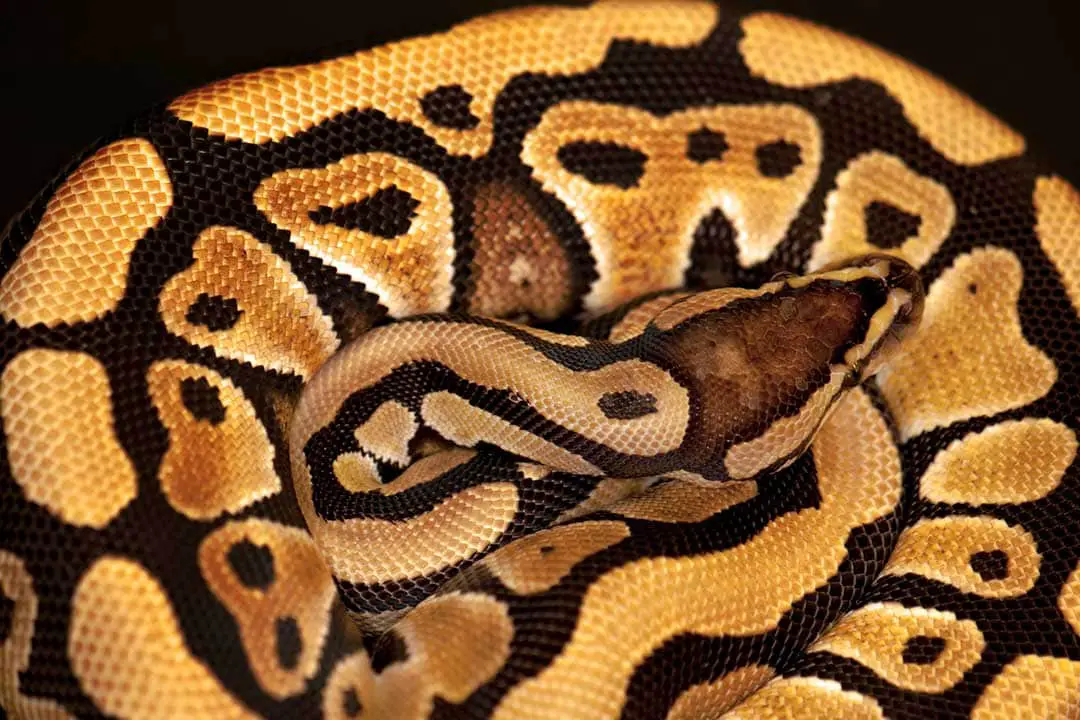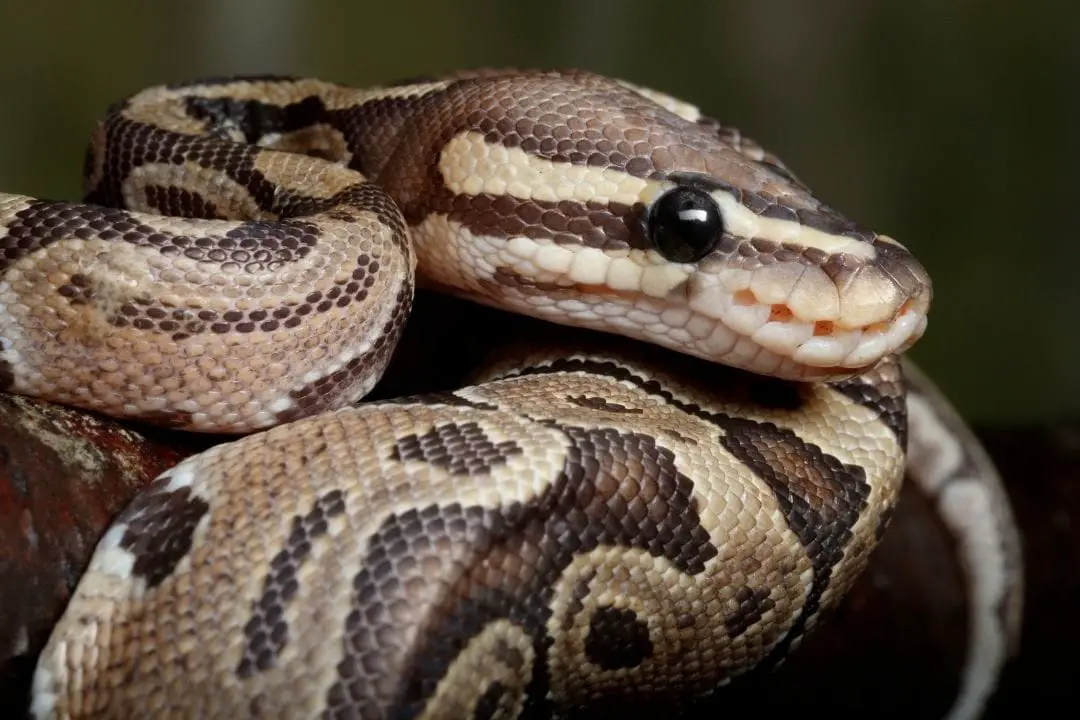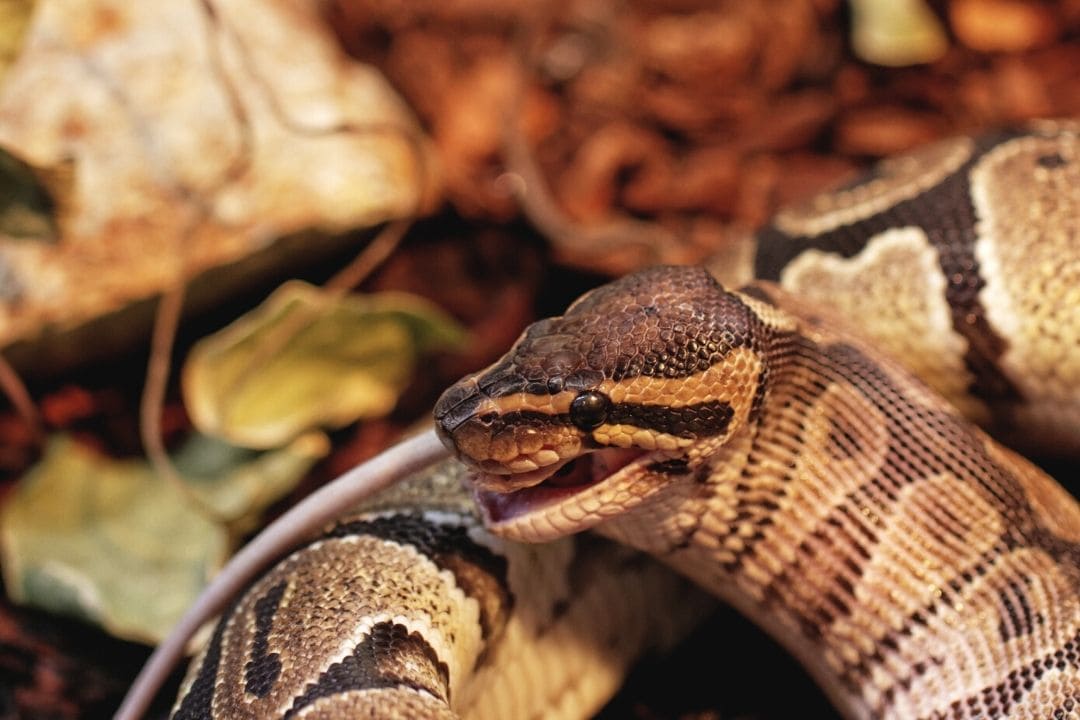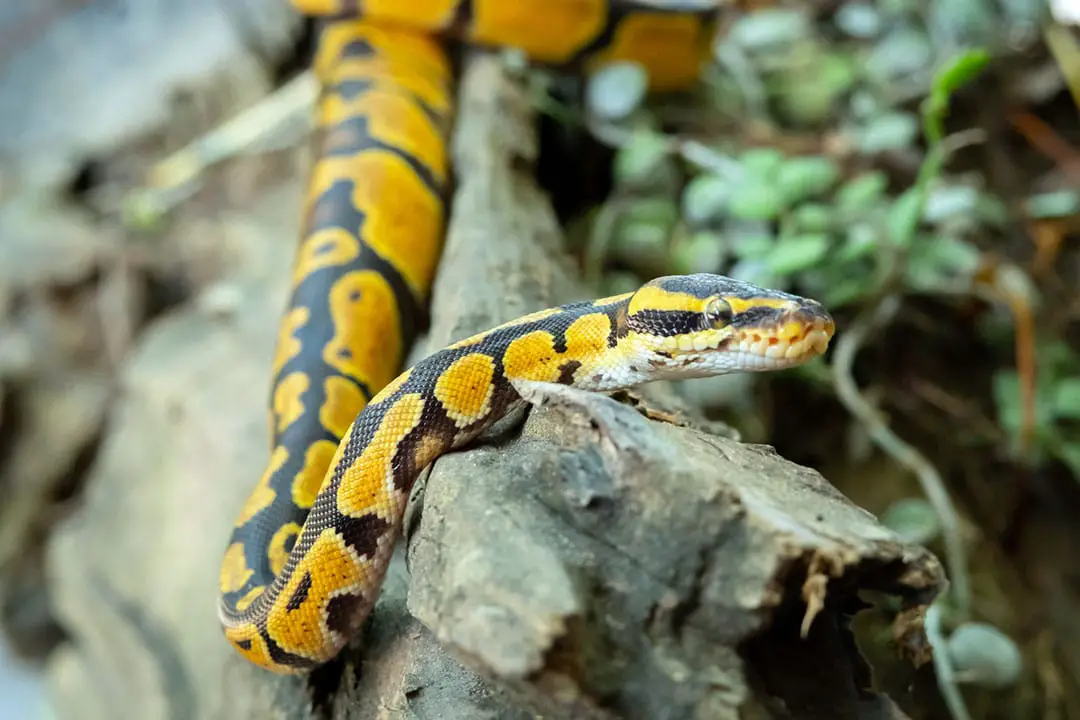The ball python or royal python (Python regius) is a very popular pet snake. If you want to keep one as a pet, you may be wondering how big ball pythons get.
As a general rule, ball pythons reach between 3.5 and 6 feet in length. Males are shorter averaging under 5 feet, while females can be 6. These are heavy-bodied snakes, so they weigh much more than many other snakes.
Everything you need to know about caring for Ball Pythons in captivity:
Read our Ball Python Care Sheet (Complete Setup & Guide)
Sexual Dimorphism
Ball pythons are sexually dimorphic. Hatchlings show no major differences, but females grow much more quickly. Females also tend to have longer jaws than males.
Females are also heavier in general since body condition is related to reproductive success in female ball pythons.
This study goes over the sizes of snakes based on sex as well as dietary differences. Males and smaller snakes such as juveniles also have different habits than adult females and large individuals.
As noted in that study, males and smaller snakes typically eat arboreal prey such as birds and tree-dwelling mammals. Females have a higher ratio of ground-dwelling mammals in the diet than males.
This is because males and juveniles hunt in trees if they can find ones that support their weight. Ball pythons are slow-moving snakes, so they try to avoid predators whenever possible.
They tend to be nocturnal and most individuals will avoid anywhere they can smell predators.
Growth
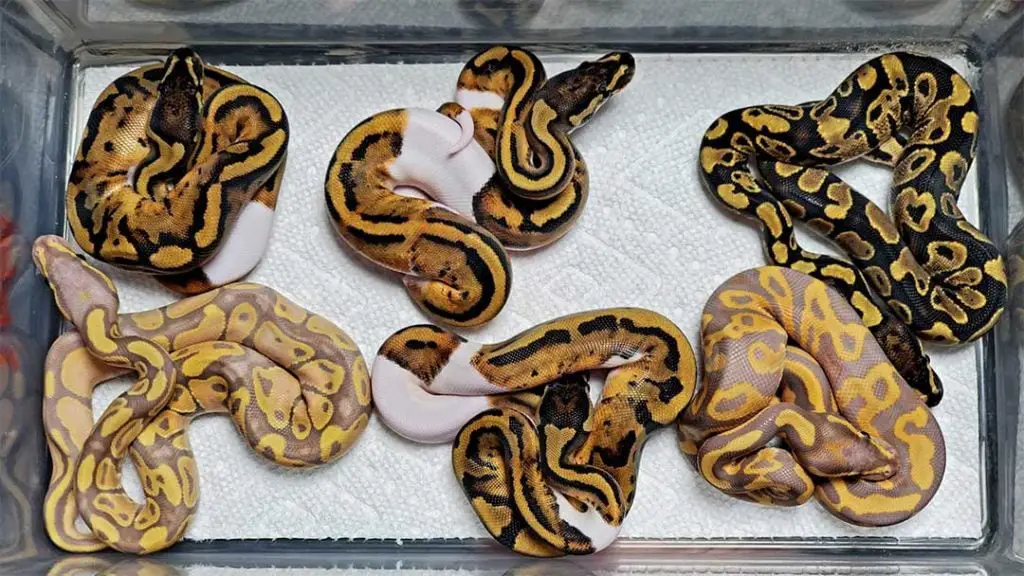
Ball pythons typically hatch from their eggs at a length of 25 and 43 cm (10-17 in).
They will typically weigh between 30 and 100 ounces (1-3.5 oz) at hatching. Larger females will typically produce larger eggs and larger babies. Hatchlings from eggs that have been incubated by the mother will also be larger on average.
Ball pythons will typically double in size by 3 months old, at which point the snake is considered a juvenile.
Most breeders will not sell a snake until it has had a few meals. Many may even wait to sell the snake until it has reached the juvenile stage.
A juvenile ball python will be between 3 months and 1 year of age. Juvenile ball pythons will gain somewhere between 50 and 100 grams (1.76-3.5 oz) a month. The snake will be between 40 and 61 cm (16-24 in) at one year of age.
It should weigh between 500 and 1000 grams (17-35 oz) at this point in its life. Females will grow much faster than males at this point in life.
Expect males to be in the lower ranges of growth while a female will be in the upper areas.
The next stage of life is the sub-adult. Sub-adult snakes will reach their adult length between 2 and 3 years and start putting on weight. You will see weight gains between 300 to 500 grams (10.5-17 oz) a year.
Your snake should be between 76 and 167 cm (30-66 in) long by three years old. Females will be larger and put on weight more quickly than males. Males do typically reach sexual maturity more quickly.
An adult ball python will be between 90 and 167 cm (36-66 in) as an adult. The typical weight range for an adult is 1200-2500 grams (42-88 oz).
Breeding females are typically longer and heavier than a male snake of the same age. While your snake has finished the majority of its growth, adult ball pythons continue to grow very slowly.
Snakes that have been fed on a slower schedule or have been on frequent feeding strikes will take longer to grow.
You may not see these snakes reach maturity until 4 or 5 years of age. This isn’t always a bad thing, but be sure to check often to make sure your snake is being kept in good condition. Poor conditions will make your snake grow more slowly.
Myths
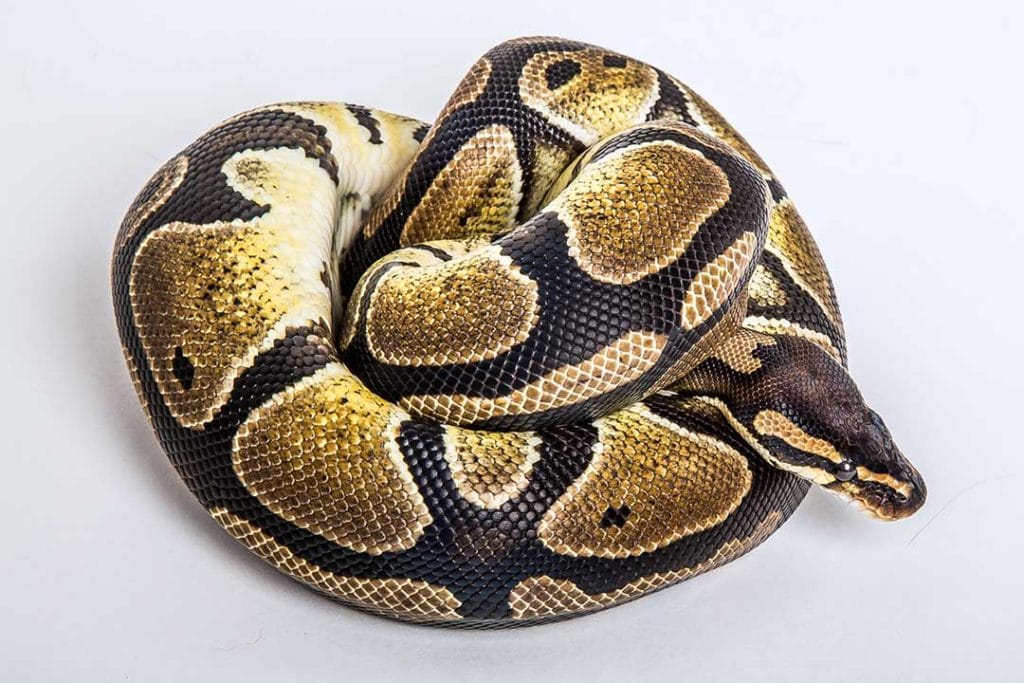
Since ball pythons have been in the pet trade for so long, there are a few myths about how they grow. It is a fact that the feeding schedule will impact the growth rate of snakes. However, even during periods of low food availability, snakes will continue to grow longer.
Starving your snake will not make it smaller. It will likely reach adult length, but be malnourished and likely more aggressive since it is hungry.
Cage size does not change reptile growth. Keeping a ball python in cramped conditions will not result in a smaller snake. It may take slightly longer to reach adult size at most.
Your snake will likely end up obese since it doesn’t have enough room to get any decent exercise in. Ball pythons do hide and sleep for much of the day.
However, they will emerge once the sun sets. They can be quite active, particularly if the snake is hungry since it will instinctively hunt for any signs of rodents to catch.
Snakes that are obese will frequently have wrinkled skin and you may not be able to see the spine easily. The tail may seem skinny compared to the body.
You will also notice that the snake seems squishy if you handle it. A healthy snake is very firm since you can easily feel the powerful muscles they use to constrict prey.
A snake that is outwardly obese will already have a great deal of internal fat that may be putting pressure on its organs. If you want your snake to grow and gain weight quickly, be careful that you don’t make it obese. You want to see steady growth in your snake.
Conclusion
Ball pythons are very small for pythons, though they can reach 6 feet in length.
Female snakes will be larger than a male. They grow quickly for the first few years of life before their growth slows to a crawl after about 3 years of age. If you have any questions or comments, please leave them below.
